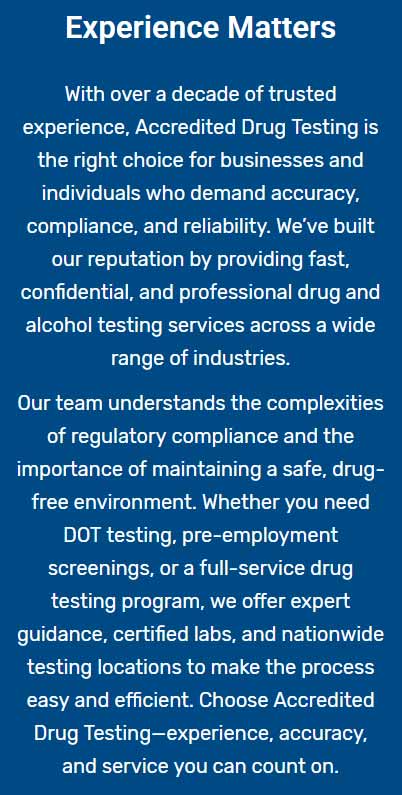Hablamos Español
Convenient & Confidential
Testing Centers Nationwide
Schedule Today
(800)-221-4291
Drug Testing Locations
Convenient & Confidential
Testing Centers Nationwide
Schedule Today
(800)-221-4291
Same Day Service




